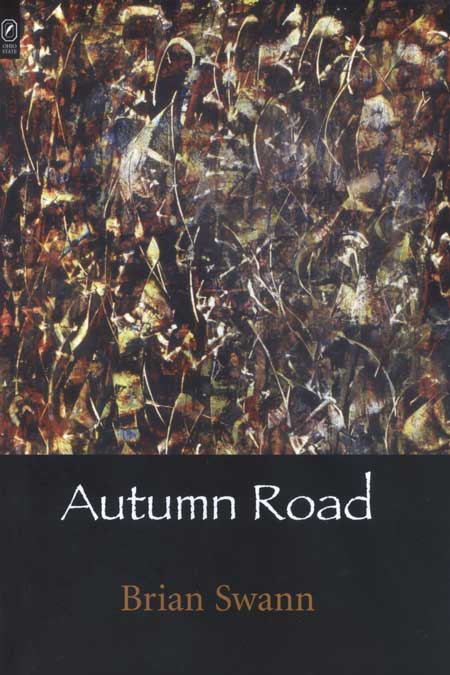click here to read excerpts from the book

Autumn Road
Brian Swann
“Imagine D. H. Lawrence writing with a sense of humor, and you’ll have a faint idea of what Brian Swann’s rich, detail-packed, mid-twentieth-century English memoir poems are like. . . . Swann’s brilliant, witty short lyrics make up about half the book, and they’re delightful to read, too. This is a generous collection of his work, a distillation of many years, and one of the most solid collections of poetry I’ve read in a long time.” —Ploughshares
“These accessible poems startle and amaze with their erudition and fierce insistence on making the new world newer still. This is high poetry of mind, heart, and soul.” —David Citino
“Mr. Swann’s subject is history, past and as a dimension of the present, caught in the perspective of language. His scope itself is eloquent, a testimonial to a long devotion to poetry and its sources.” —William Merwin
“This extraordinary original poetry is the work of an extraordinary mind. And by mind I mean a profoundly constitutional and symbolic organization of intellect and imagination. Brian Swann creates places, beings, and events that represent the forms of sympathy and doubt in action. They are haunting poems—unforgettable. I think they may well engender a new American poetics that all literate people must take into account.” —Hayden Carruth
Brian Swann’s Autumn Road consists of three interrelated parts: “ghosts/on paper, anonymous, ambiguous, festive—,” from the viewpoint of someone “similar to/who I am, but not me.” There should be no “mistaking flashes” for “heliography.” This poem, “Heliography” and other in Part I, “The Lost Boy,” is set during and after World War II in Northumberland, England, a world of farm, coal mine, family and relatives. Later, in adolescence, the scene moves to the fen country of East Anglia and focuses on a difficult father and a violent world. Part II centers on “Ars Amatoria” in its various manifestations: marriage, the family and children. Part III, Eschatology,” looks back but also forward. It moves through middle age to “Three Score and Then Some.” What it sees is “the River Jordan spreading across night sands,” friends and family no longer here. It ends with the title poem, set in New York’s western Catskill Mountains: “I look for ecstatic image/here below where the year is dying fiercely.
Brian Swann is professor of humanities at The Cooper
Union for the Advancement of Science and Art in New York, New York.
|
Jul
2005
Poetry 128 pp. 6 x 9 |
|
| $24.95 paper 978-0-8142-5147-8 | Add paper to shopping cart |
| $14.95 CD 978-0-8142-9090-3 | Add CD to shopping cart |
| The Ohio State University Press/The Journal Award in Poetry |


